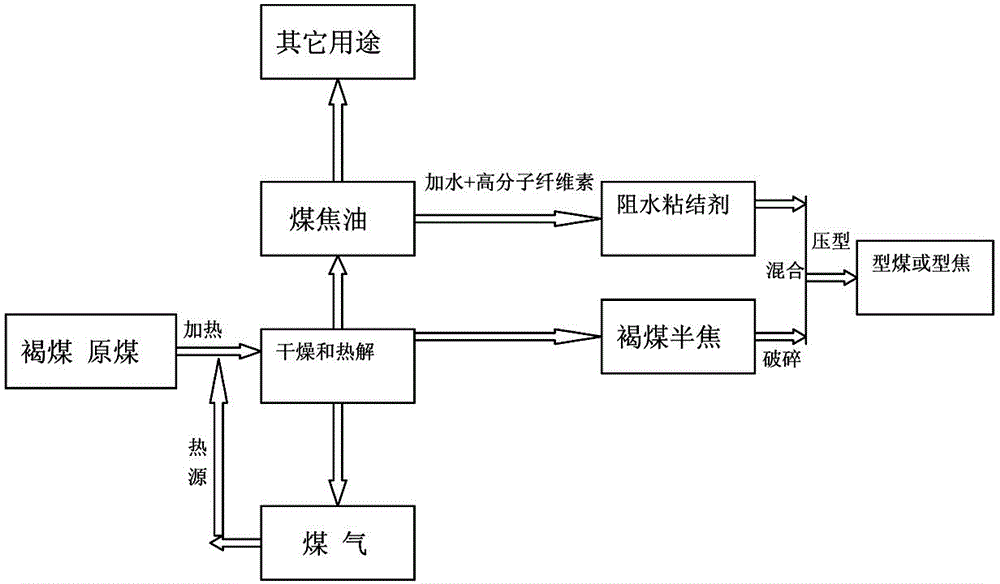Lignite molding production method
A production method and technology for lignite, applied in the field of lignite processing and utilization, can solve the problems of high investment and production cost, difficult to popularize and use, weak lignite cohesion, etc. low cost effect
- Summary
- Abstract
- Description
- Claims
- Application Information
AI Technical Summary
Problems solved by technology
Method used
Image
Examples
Embodiment Construction
[0015] In order to make the technical problems, technical solutions and beneficial effects to be solved by the present invention clearer and clearer, the present invention will be further described in detail below in conjunction with the accompanying drawings and embodiments. It should be understood that the specific embodiments described here are only used to explain the present invention, not to limit the present invention.
[0016] Such as figure 1 The production method of a kind of lignite molding shown is characterized in that: the concrete implementation of this production method is as follows:
[0017] ① Dry and pyrolyze the lignite raw coal, and the products after pyrolysis include gas, coal tar and lignite semi-coke;
[0018] ② Collect the gas obtained from pyrolysis and reuse it as fuel for raw coal drying and pyrolysis;
[0019] ③Collect the coal tar obtained by pyrolysis, and use part of it as the raw material of the water-blocking adhesive, and the remaining par...
PUM
| Property | Measurement | Unit |
|---|---|---|
| particle diameter | aaaaa | aaaaa |
| viscosity | aaaaa | aaaaa |
Abstract
Description
Claims
Application Information
 Login to View More
Login to View More - Generate Ideas
- Intellectual Property
- Life Sciences
- Materials
- Tech Scout
- Unparalleled Data Quality
- Higher Quality Content
- 60% Fewer Hallucinations
Browse by: Latest US Patents, China's latest patents, Technical Efficacy Thesaurus, Application Domain, Technology Topic, Popular Technical Reports.
© 2025 PatSnap. All rights reserved.Legal|Privacy policy|Modern Slavery Act Transparency Statement|Sitemap|About US| Contact US: help@patsnap.com

